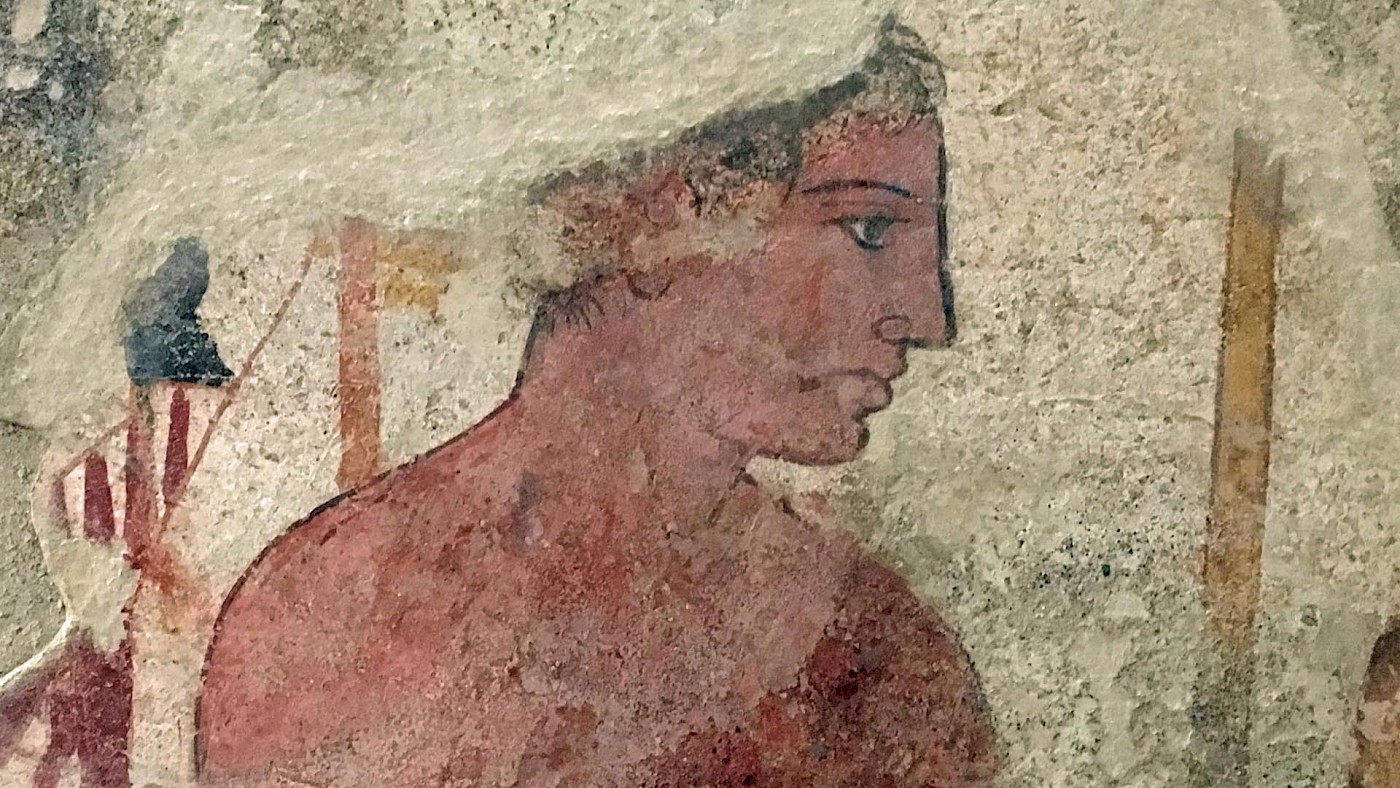In 1863, two Etruscan painted tombs were discovered near the village of Porano, outside of Orvieto, Italy. They are referred to as Golini I and Golini II, named after the archaeologist who found them, Domenico Golini. A third tomb, belonging to the Hescanus family, was discovered in 1883.
The tombs belonged to wealthy, presumably aristocratic Etruscan families. They all date to the fourth century BC, with Golini II probably a little later in date than Golini I. The grave goods recovered from these tombs included pottery, a mirror, and a number of bronze objects, including armour. The frescoes that decorate the inside of the walls of these burial places are executed in a style that evokes Greek wall-painting.
The Golini tombs
The ancient wall-paintings of the Golini tombs were fairly fragile and started to detoriate rapidly after having been exposed to air. In 1950, the decision was made to remove the paintings and secure them at the archaeological museum at Orvieto, where the frescoes can now be admired in two rooms that are made to resemble the interior structure of the tombs. (The paintings of the third tomb are preserved in situ.)

Golini I has a room that is divided into two distinct halves by a wall. The walls on the left-hand side of the room depict people preparing a banquet. The walls on the right-hand side of the room depict the actual feast, with people eating and drinking, and enjoying the music of flute-players.

Next to the entrance, a man arrives on a chariot, just in time to take part in the feast. Painted letters identify him as Larth Leinies, for whom the tomb must have originally been made.
Letters also identify the man presiding over the banquet proceedings as Eita (i.e. Hades), wearing a wolfskin cap. He is flanked by his wife, Phersipnal (i.e. Persephone). Some of the banqueters are identified as members of Larth’s family, including his father and an uncle.

Golini II consists of a single open space. The frescoes here are in worse condition that the ones from Golini I, and much of the original work has been lost. Nevertheless, a number of warriors, and various lifelike animals. As in Golini I, one wall shows couches with people reclining on them.
This tomb is also referred to as the Tomba delle Due Bighe on account of the two chariots that flanked either side of the entrance. Some inscriptions remain legible and refer to two Etruscan families who must have been buried here: Cnezus and Vercnas.
Closing remarks
In funerary art, it’s common to depict banquets and feasting. After all, one hopes that in the afterlife, the worries of everyday existence will be a thing of the past, replaced instead by an eternity of relaxing, enjoying a good meal and drinking fine wine. Joshua Hall pointed out to me that banqueting for the deceased dates back to the eighth century BC.
The scenes here reminded me of the (slightly older) Tomb of the Diver from Paestum. Though obviously the paintings here are much larger, seeing as these are chamber tombs, the themes are similar, especially the banqueting scene. (This is also a friendly reminder that Paestum is worth visiting, too.)
While the archaeological museum in Orvieto is relatively small, its collection is interesting. When you’re there, you cannot visit the tomb paintings on your own: one of the museum’s employees has to switch on a light specifically so you can venture inside, and they will dutifully keep watch while you’re there. But this is a small price to pay for being able to study these ancient paintings up close.
